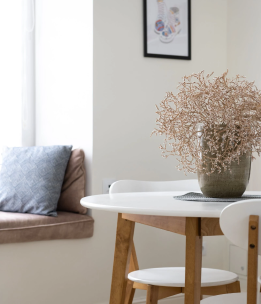In the realm of interior design, the art goes beyond aesthetics; it delves into the functionality of spaces, aiming to transform them into environments that seamlessly align with the needs and lifestyles of their inhabitants. The concept of "Transforming Spaces for Maximum Utility" encapsulates a holistic approach to interior design, where the emphasis is not only on visual appeal but also on optimizing every inch of the area for practical use.
Core Concepts:
User-Centric Design
Start by understanding users' needs and routines, shaping the design around their lifestyle for a personalized touch.
Adaptable Elements
Incorporate flexible design elements such as modular furniture and convertible layouts to accommodate diverse needs.
Efficient Storage Solutions
Integrate smart home solutions for a modern touch, enhancing the usability and adaptability of the space.

Conclusion:
In the evolving landscape of interior design, the concept of transforming spaces for maximum utility is a guiding principle that reflects the dynamic nature of modern living. By focusing on user needs, flexible design elements, and innovative solutions, interior designers can create spaces that not only captivate the eye but also serve as functional and adaptable environments. "Transforming Spaces for Maximum Utility" is the future of interior design – a fusion of form and function that truly enhances the way we live.


